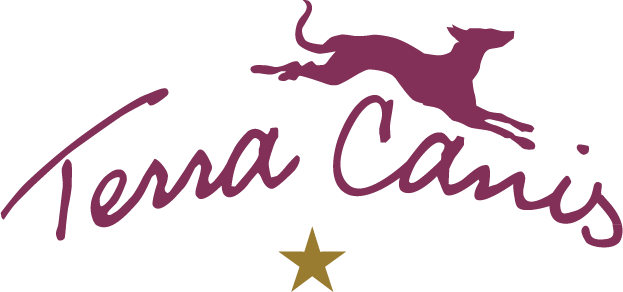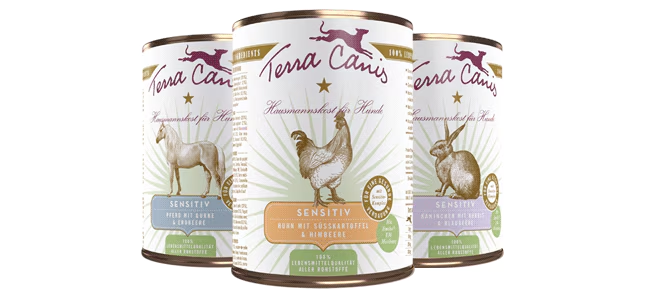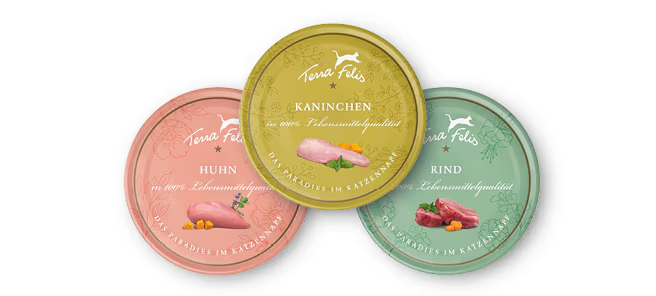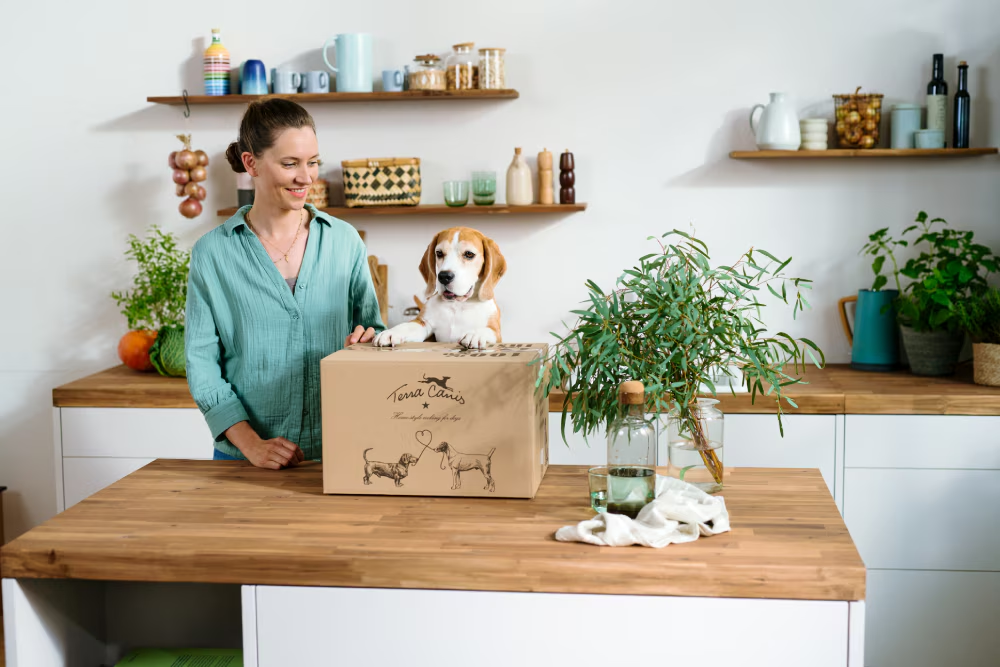FAQ
Frequently asked questions
Feeding
As the dog gets older its energy requirements often drop due to a lower rate of metabolism and the reduced level of physical activity. Fat-free body mass and muscles are broken down as part of the ageing process which means the protein reserves are smaller. As older dogs are more prone to stress due to their susceptibility and possible illnesses, it is important to compensate for the missing protein reserves by adding high-quality, easily digestible protein. For this reason the dog now requires lots of valuable meat and as little fat as possible in its diet in order to meet its changing metabolism requirements. The main aim of an older dog’s diet is to support its health, to maintain on optimum weight and to prevent chronic illnesses. Stressful situations, sudden changes to the daily routine and every other kind of stress should be avoided.
Senior dogs should not be given any more grain in their food in order to prevent digestion and utilisation of nutrients from being put under any more strain. A perfect balance of medicinal herbs helps to prevent or alleviate age-related problems with the heart, kidneys, joints and immune system. Illnesses which are caused by a hormonal dysfunction, such as an overactive thyroid or diabetes mellitus, but also tumour diseases or limited digestive function/enzyme disorders which may, among other reasons, be the result of impaired functioning of the pancreas, may - particularly in older dogs - mean that dogs need not less, but more energy, and that the amount of feed they are given therefore needs to be adjusted appropriately. This means that the amount of feed can, of course, always be adjusted to the individual metabolism of the older dog in question. For older dogs who are always hungry but need to keep their fat intake down, the Terra Canis Garden Casserole is a great option for a snack between meals.
Even for healthy dogs it is fundamentally important that there is a gap of at least eight hours between feeding wet and dry food. This is due to the digestion times of the two kinds of food. Wet food is broken down and digested in only six hours. Dry food needs 10–12 hours to be digested due to its different composition. If these two digestion processes overlap, waste products are created and fermentation occurs in the dog’s gastrointestinal tract, attacking the dog’s mucous membrane. This can cause bloating and intolerances.
Feeding ill dogs
In this case, it should be clarified with your vet whether the most recent test results point towards it being better for your dog to change to a specialised kidney diet, or whether preventative feed would come into consideration for the moment.
You can find a kidney diet in our range of veterinary products. Alimentum Veterinarium (AliVet) Low Protein is a product with a low phosphorus content specifically to reduce strain on the kidneys.
If your vet says that a specialised kidney diet is not yet necessary, you could start by reducing the protein content of your dog’s meals to protect the kidneys, as they play a central role in excreting metabolic waste products which are formed during the breaking down/conversion of protein, among other processes. In order to reduce the protein content of your dog’s meals, you could, for example, combine the Senior Menus with the Terra Canis Garden Casserole in a ratio of 80:20.
It is important that your poorly pet be regularly seen by a vet to check his or her kidney values.
Problems with feeding
Product details
The calcium-phosphorus ratio in feed for fully grown dogs should be between 1:1 and 2:1. This is taken into account in all our Terra Canis menus. The increased calcium requirement for young dogs is already taken into account in our PUPPY food line, meaning that no additional calcium supplements are necessary.
The most reliable way of testing if the actual net weight is the same as the grams stated on the label is to weigh the can while it is still closed. The empty weight of the can including the lid should then be deducted. This value is the net weight of the contents of the can. Here are the weights of the empty cans with lid: 100g: 26g; 200g: 37g; 400g: 51g; 800g: 95g Variations of +/- 1-2g are possible.
The filling quantities are regularly checked by the Weights and Measures Office and by ourselves. It is always best to weigh the sealed cans and subtract the weight of the empty can with the lid. It is also important to completely remove and weigh the contents together with the liquid.
Barley grass grows from the barley grain in the form of a long green stalk, similar to freshly grown kitchen herbs. The superfood barley grass may have a name that sounds like it is a grain, but other than that, it has nothing to do with the starch-producing plant. Barley grass is gluten-free and grain-free and contains an unrivalled variety of nutrients. The green nutrient powerhouse combines a wealth of vital nutrients, vitamins, minerals, secondary phytochemicals and antioxidants. It is also rich in the green ‘super nutrient’ chlorophyll.
However, barley grass is not just packed with vital substances, but also supports intestinal health, intact skin, a balanced acid-base balance and healthy metabolic processes in the organism.
Ordering, transportation and delivery
Customer account
- Input error with the bank details
- Negative entry




